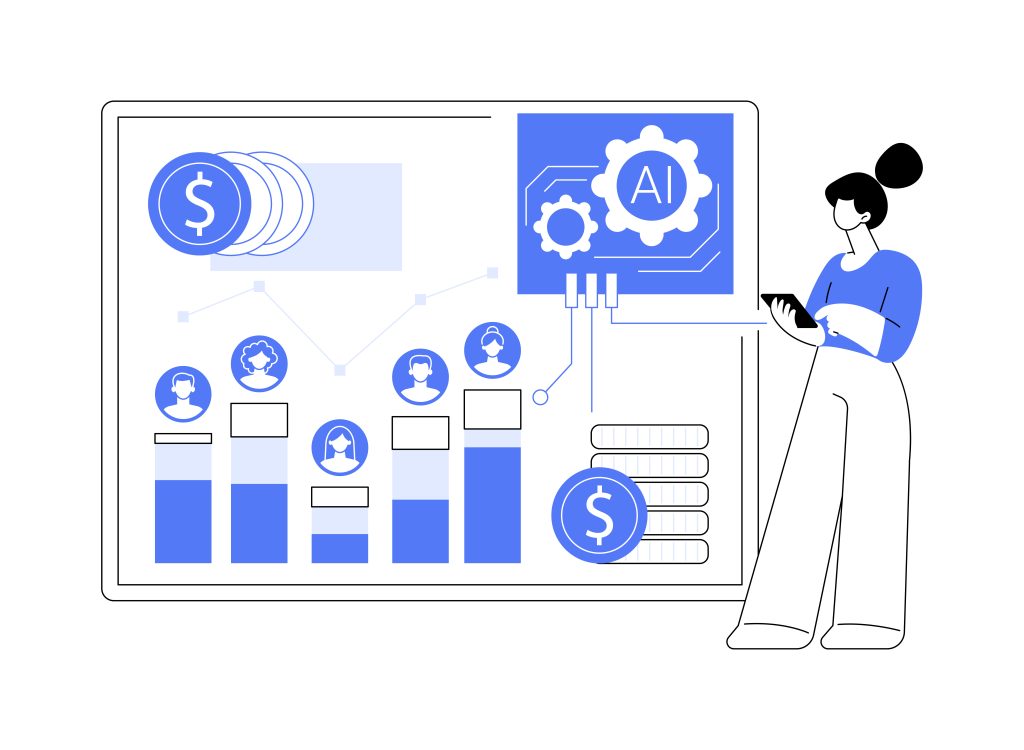In the age of data-driven decision-making, small and medium-sized businesses need more than traditional spreadsheets to stay ahead. Finance reporting isn’t just about looking backward; it’s about using the data to drive forward. That’s where AI prompts come in. AI can support finance teams by automating insights, identifying trends, and generating actionable goals that align with business objectives. In this blog, we’ll explore 10 of the best AI prompts for finance reporting that can help your team set clear, achievable financial goals and track progress against them.
Whether you’re managing cash flow, budgeting, or analyzing trends, these prompts will give your finance team the boost it needs.
By – Vamsi Bhumireddy
The 10 Best AI Prompts for Finance Reporting
1. Analyze Revenue and Expense Trends
Prompt: “Analyze our monthly revenue and expenses from the past six months and summarize key financial trends we should be aware of.”
Example Output: Over the past six months, revenue has grown steadily by 5% month-over-month, while expenses increased by 8% in Q2 due to higher operational costs. This signals a need to reassess supplier contracts and streamline workflows.
Why this is useful: It uncovers trends quickly, allowing you to spot opportunities or red flags before they become major issues.
2. Generate a SMART Goal for Cash Flow
Prompt: “Generate a SMART goal based on our current cash flow performance to improve liquidity in the next quarter.”
Example Output: Goal: Increase positive cash flow by 15% in the next quarter by accelerating receivables and reducing discretionary spending by 10%.
Why this is useful: It translates financial analysis into an actionable goal with clear benchmarks.
3. Compare Year-on-Year Performance
Prompt: “Compare current year-to-date financial performance against last year and highlight areas for cost optimization.”
Example Output: Marketing costs increased by 25% with only a 7% rise in conversions. Suggest reallocating part of the budget to high-performing channels.
Why this is useful: Improves spending efficiency and strategic planning.
4. Identify and Address Financial Risks
Prompt: “List the top three financial risks facing the company this quarter and suggest mitigation strategies.”
Example Output: Risks: declining gross margins, delayed customer payments, and rising interest rates. Recommend reviewing pricing models and tightening credit terms.
Why this is useful: Supports proactive decision-making and risk readiness.
5. Set Budget Priorities Using Real Data
Prompt: “Based on the current financial data, what should our budget priorities be for the next six months?”
Example Output: Focus spending on product development and retention efforts, while scaling back offline marketing and event sponsorships.
Why this is useful: It ensures spending aligns with what’s driving results.
 6. Create an Executive Dashboard Summary
6. Create an Executive Dashboard Summary
Prompt: “Create a financial dashboard summary for the leadership team, including profitability, burn rate, and growth metrics.”
Example Output: Net Profit Margin: 12%. Monthly Burn Rate: $25,000. YoY Growth: 18%. Cash Runway: 8 months.
Why this is useful: Helps stakeholders see what matters most at a glance.
7. Improve Forecasting Accuracy
Prompt: “Write a goal for the finance team to improve forecasting accuracy based on past deviations in budget vs. actual performance.”
Example Output: Goal: Reduce forecasting variance to under 5% by adopting rolling forecasts and reviewing assumptions monthly.
Why this is useful: Creates a framework for continuous planning improvements.
8. Analyze Customer Payment Behavior
Prompt: “Summarize customer payment behavior trends and suggest actions to improve accounts receivable turnover.”
Example Output: 40% of invoices are paid late. Suggest sending automated reminders and offering early payment discounts.
Why this is useful: Improves working capital and reduces cash flow disruptions.
9. Break Down Fixed vs. Variable Costs
Prompt: “Identify fixed vs. variable cost breakdowns for the past quarter and suggest ways to reduce unnecessary variable spending.”
Example Output: Variable costs were 65% of all expenses, driven by logistics and ad spend. Recommend renegotiating vendor contracts and limiting ad campaigns with low ROI.
Why this is useful: Supports smarter cost reduction decisions without affecting stability.
10. Generate a Financial Health Score
Prompt: “Create a financial health score for the company based on liquidity, profitability, and solvency indicators.”
Example Output: Score: 78/100. Strong current ratio (2.1), low debt-to-equity, but declining income margin.
Why this is useful: Offers a simplified overview of business stability for non-finance stakeholders.
 Example Output of AI-Generated Goal Setting
Example Output of AI-Generated Goal Setting
Scenario: A startup sees rising operational costs and wants to address them while maintaining growth.
Prompt: “Based on recent financial reports, generate a SMART goal to optimize operational costs while supporting growth.”
AI Output: Reduce operational costs by 12% over the next quarter by consolidating vendor services and streamlining reporting processes, while targeting a 10% revenue increase.
Why this is useful: This kind of structured goal provides direction to act on financial data instead of just reporting it.
How Stratpilot Supports Smarter Finance Planning
Stratpilot is designed to make AI goal setting accessible for finance professionals. Rather than manually interpreting financial reports, users can feed Stratpilot prompts based on real business scenarios from cash flow management to budgeting and cost optimization.
The platform offers tailored workspace templates, intelligent AI prompts, and structured goal guidance to help finance teams translate financial insights into clear actions. This makes it easier to drive measurable progress and align team efforts with business objectives without relying on multiple spreadsheets or scattered tools.
Ready to Transform Finance Reporting into Goal-Driven Growth?
Sign up for Stratpilot today and discover how your finance team can turn reporting into strategic planning, powered by the right AI prompts.
Frequently Asked Questions (FAQs)
1. What are AI prompts for finance reporting?
AI prompts are questions or tasks you input into AI tools to help analyze financial data, generate summaries, and even create structured goals. They simplify complex finance processes and reveal actionable insights.
2. How can AI prompts support finance teams?
AI prompts help identify trends, suggest improvements, and create clear financial goals based on data. They reduce manual analysis and bring consistency to your financial strategy.
3. Is Stratpilot suitable for finance professionals?
Yes. Stratpilot offers intelligent AI prompts and templates tailored for finance planning, making it easier to convert raw data into team-aligned goals and actions.
4. Does Stratpilot automate financial reports?
No, Stratpilot doesn’t replace financial software. Instead, it helps you interpret financial reports and turn them into strategic objectives through AI-supported guidance.
5. Can small businesses benefit from Stratpilot?
Absolutely. Stratpilot is ideal for small businesses that need clarity in financial planning without hiring large teams or expensive consultants.





